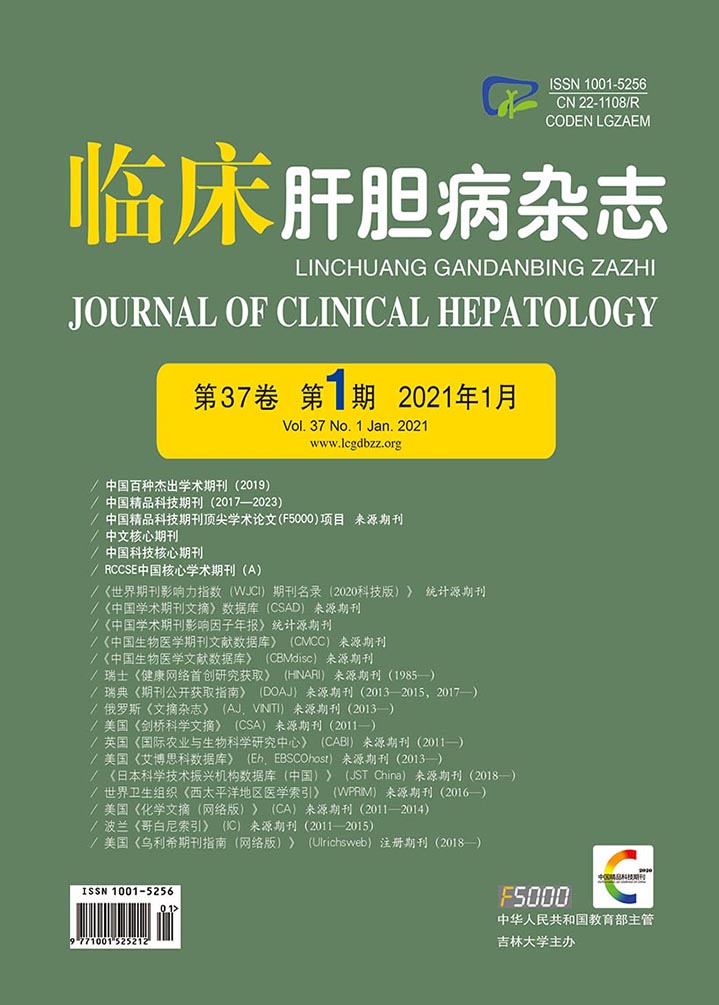| [1] |
WANG FS, FAN JG, ZHANG Z, et al. The global burden of liver disease: The major impactof China[J]. Hepatology, 2014, 60(6): 2099-2108. DOI: 10.1002/hep.27406 |
| [2] |
|
| [3] |
WANG MM, WANG GS, SHEN F, et al. Hepatic steatosis is highly prevalent in hepatitis B patients and negatively associated with virological factors[J]. Dig Dis Sci, 2014, 59(10): 2571-2579. DOI: 10.1007/s10620-014-3180-9 |
| [4] |
|
| [5] |
|
| [6] |
Fatty Liver and Alcoholic Liver Disease Group of the Chinese Medical Association Hepatology Branch. Guidelines for the diagnosis and treatment of non-alcoholic fatty liver disease[J]. J Pract Hepatol, 2007, 10(1): 1-3. (in Chinese) DOI: 10.3969/j.issn.1672-5069.2007.01.001 |
| [7] |
Fatty Liver and Alcoholic Liver Disease Group of the Chinese Society of Liver Diseases. Guidelines for the diagnosis and treatment of non-alcoholic fatty liver disease (2010 revised edition)[J]. J Clin Hepatol, 2010, 26(2): 120-124. (in Chinese) https://www.cnki.com.cn/Article/CJFDTOTAL-YXQY201207005.htm |
| [8] |
Digestive System Disease Professional Committee of Chinese Integrative Medicine Association.Consensus opinions on diagnosis and treatment of non-alcoholic fatty liver disease with integrated traditional Chinese and Western medicine[J]. Chin J Integr Tradit West Med, 2011, 31(2): 155-158. (in Chinese) https://www.cnki.com.cn/Article/CJFDTOTAL-ZXPW201711002.htm |
| [9] |
Fatty Liver and Alcoholic Liver Disease Group, Chinese Medical Association Hepatology Branch, Fatty Liver Disease Expert Committee of Chinese Medical Doctor Association. Guidelines for prevention and treatment of non-alcoholic fatty liver disease (2018 Update)[J]. J Clin Hepatol, 2018, 34(5): 947-957. (in Chinese) DOI: 10.3969/j.issn.1001-5256.2018.05.007 |
| [10] |
ZHU WF. Diagnostics of Traditional Chinese Medicine[M]. Beijing: China Press of Traditional Chinese Medicine, 2002: 139, 236. (in Chinese)
朱文峰. 中医诊断学[M]. 北京:中国中医药出版社, 2002: 139, 236.
|
| [11] |
ZHU WF. Syndrome differentiation[M]. Beijing: People's Medical Publishing House, 2008: 36, 230-259. (in Chinese)
朱文峰. 证素辨证学[M]. 北京:人民卫生出版社, 2008: 36, 230-259.
|
| [12] |
YAO NL. Differential diagnosis of TCM symdrome(2nd Edition)[M]. Beijing: People's Medical Publishing House, 2002: 122-455. (in Chinese)
姚乃礼. 中医证候鉴别诊断学(第2版)[M]. 北京:人民卫生出版社, 2002: 122-455.
|
| [13] |
|
| [14] |
|
| [15] |
|







 DownLoad:
DownLoad: